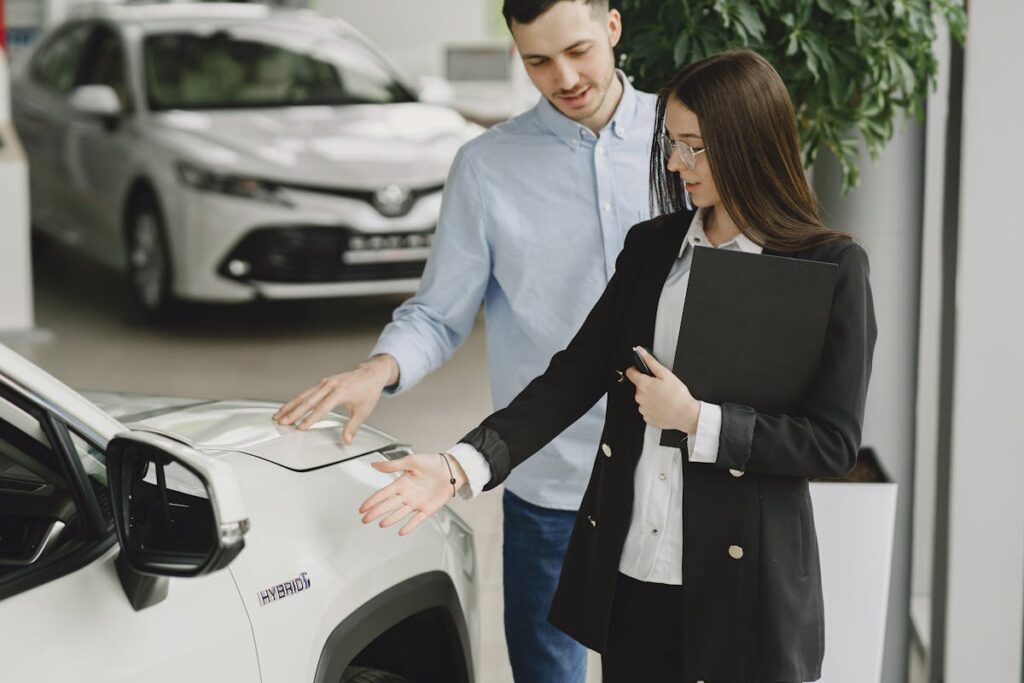Acquiring a classic car often signifies more than a mere purchase; it is a venture into the domain of nostalgia, aesthetics, and personal gratification. However, this venture is fraught with potential pitfalls and complexities that require careful navigation. From understanding specialised terminology to evaluating a car’s condition and history, to determining fair pricing and factoring in additional costs such as restoration and insurance – each step of the process holds its own challenges. The journey to owning a classic car, while exciting, demands a well-informed approach to avoid potential disappointments and financial setbacks. Let’s explore deeper.
Key Takeaways
- Familiarize yourself with classic car terminology to properly assess value and market trends.
- Inspect the vehicle thoroughly for hidden damages, including rust and frame integrity, which can significantly impact value.
- Understand the importance of vehicle history for authenticity verification, restoration insights, and assessment of future value.
- Consider hidden costs such as restoration and maintenance expenses, storage and insurance costs, and registration fees.
- Choose the right insurance, considering liability coverage and agreed value policies to protect against financial loss.
Understanding Classic Car Terminology
While it may seem intimidating at first, understanding classic car terminology is a fascinating journey into the world of vintage vehicles. It is a domain where terms such as ‘matching numbers’, ‘survivor’, and ‘restomod’ become an integral part of your vocabulary, each term carrying nuanced meanings that can greatly impact the value and appeal of an automobile.
The first step towards mastering classic car language is decoding classic car classifications. These categories, like ‘antique’, ‘vintage’, and ‘classic’, are more than mere semantics. They carry implications about the car’s age, rarity, and even potential value. For instance, an ‘antique’ typically refers to cars over 45 years old, while ‘classic’ often pertains to vehicles made between 20 and 45 years ago.
Equally essential is understanding restoration terminology. From ‘frame-off restoration’ denoting a complete overhaul, to ‘driver quality’ indicating a car that may not be show-worthy but is in good running condition, these terms offer insight into what to expect regarding a car’s condition and the work that has gone into preserving or enhancing its charm.
Through engaging with this rich lexicon, enthusiasts can access a deeper appreciation for classic cars and navigate the market with increased confidence.
The Importance of Vehicle History
In the domain of classic car acquisition, an all-encompassing grasp of the vehicle’s history is paramount. Uncovering the vehicle’s provenance not only provides a fascinating narrative but it also offers invaluable insight into its authenticity and originality. Furthermore, a keen examination of the vehicle’s past can help detect hidden damages, ensuring you are making a sound investment.
Understanding Vehicle Provenance
Exploring the world of classic cars, one quickly realizes the essential importance of understanding vehicle provenance or the vehicle’s history. This thorough examination of the past of a classic car can unearth critical details about its authenticity, restoration history, and overall longevity.
Vehicle authenticity is often the first thing a potential buyer investigates. This includes verifying the make, model, and year of production, and cross-checking these details with the VIN (Vehicle Identification Number). A car with a proven lineage often holds greater value, not just monetarily but also regarding its historical significance.
The restoration history of a vehicle is equally important. A well-documented restoration can offer insights into the quality of work done. It can also signal if the vehicle has been subject to any substantial modifications, affecting its originality. Additionally, it can show the level of care taken by previous owners, which can greatly influence the car’s future performance and value.
Grasping vehicle provenance goes beyond just knowing the car’s past. It’s about appreciating the journey that the vehicle has been on and ensuring its legacy for years to come. The story behind a classic car is as unique as the vehicle itself, and that’s what truly makes it a classic.
Detecting Hidden Damages
Unearthing hidden damages in a vintage automobile can be a complex task, yet its significance cannot be overstated. A thorough inspection is essential before purchasing a classic car, as it can reveal potential problems that may not only affect the vehicle’s performance but also its value.
One important aspect to inspect is rust. While surface rust is common and can be rectified, structural rust can be catastrophic. Areas to inspect include the vehicle’s undercarriage, wheel arches, and door bottoms. Ensuring rust prevention has been a part of the car’s maintenance schedule is key to preserving its longevity.
Equally significant is the frame integrity. The vehicle’s frame is its backbone – any compromise to its structural strength can lead to serious safety issues. Look for signs of damage or repairs; uneven gaps in doors, hood, and trunk; misaligned body panels; or welding marks, which can be indicative of a repaired collision damage.
Understanding the vehicle’s history is paramount. It can reveal a wealth of information about past damages, repairs, and the overall condition of the car. The more knowledgeable you are about a car’s past, the better positioned you are to negotiate a fair price.
Evaluating Car’s Condition
Evaluating the condition of a classic car is no simple undertaking; it requires a keen eye for detail and a vast knowledge of auto mechanics. The initial inspection should involve a thorough examination of the car’s exterior, interior, engine, and the undercarriage. Rust, for example, is a common issue with classic cars and can greatly increase restoration costs if it has permeated through the bodywork.
Next, assess the car’s mechanical components. Check if the engine runs smoothly, if the brakes and transmission function well, and if the electrical system is in working order. If any of these need repair, it’s vital to factor in these additional costs and efforts.
Maintenance tips for preserving the car’s condition are important too. Regular oil changes, checking tire pressure, and ensuring the car is stored in a dry, cool location will help to maintain the car’s value and longevity.

Classic Car Pricing Guide
Maneuvering the landscape of classic car pricing can be a complex task, requiring a solid understanding of the market and the factors that influence the value of these timeless gems. The classic car market is affected by numerous elements, such as collector car trends and vintage car auctions. These factors contribute to the fluctuating prices that can either present investment potential or financial pitfalls.
A key facet of classic car pricing is the condition grading. This incorporates both the visible aesthetics and the operational aspects of the vehicle. Restoration costs can have a significant impact on the overall value of a classic car. The lower the restoration needs, the higher the potential resale value.
A well-maintained vehicle with thorough maintenance records will likely hold a higher value. This also affects insurance coverage rates, which are essential for protecting your investment. Classic car financing is another aspect to take into account when purchasing, as it can directly influence your budget and the affordability of the car.
Understanding these aspects of classic car pricing will guarantee you make an informed purchase, optimizing your investment potential while mitigating potential risks.
Hidden Costs to Consider
Beneath the surface allure of owning a classic car, there lies a myriad of hidden costs that potential buyers must consider. The financial commitment extends far beyond the initial purchase price, with expenses such as restoration costs, maintenance costs, storage fees, insurance premiums, and registration fees all requiring serious contemplation.
Restoration expenses can be significant, particularly if the vehicle is in poor condition. This involves the cost of parts, labor, and potentially expert advice. Maintenance costs are also an essential factor, as older vehicles often require more frequent and specialized care than their modern counterparts. Oil changes, brake checks, and tire replacements can quickly add up, particularly with the scarcity of parts for some classic models.
Storage fees are another hidden cost. A classic car is a significant investment that needs to be properly protected from the elements. This often means investing in a secure, climate-controlled storage facility, which can be expensive. Insurance premiums for classic cars can also be high, as these vehicles are often considered high risk due to their age and value. Finally, registration fees can vary widely by state and vehicle age, adding to the overall ownership cost. It’s essential to research and factor in these costs to make an informed purchase.
Inspecting and Test Driving
The acquisition of a classic car necessitates a rigorous inspection and thorough test drive to guarantee its condition aligns with the buyer’s expectations and investment. The vehicle’s condition assessment is a critical phase where the buyer meticulously examines the car’s bodywork, mechanics, and interior for any signs of damage or wear. Following the physical inspection, a well-executed test drive serves as an invaluable tool in gauging the car’s performance and handling, thereby providing insights that will be instrumental in post-inspection considerations and final decision making.
Vehicle Condition Assessment
Evaluating the condition of a classic car requires a keen eye, an all-encompassing understanding of automobile mechanics, and a dose of passion for these vintage beauties. It’s not just about the aesthetics, but the functionality and structural integrity of the vehicle.
One of the most essential areas to scrutinize is the car’s body and frame. Look out for any rust spots and corrosion, as these can greatly affect the car’s value and increase restoration costs. Additionally, check the engine and transmission for any visible leaks or unusual noises when running.
Maintenance history is another vital aspect to take into account. A well-maintained classic car may have fewer issues down the line, translating to lower maintenance costs. Additionally, cars with documented maintenance history often have better performance and longevity.
Moreover, inspect the car’s interior. Check for any signs of wear and tear, such as cracked seats, damaged dashboards, or non-functioning gauges. Any faults found here can also add to the restoration costs.
Lastly, it’s important to remember that the condition of a classic car isn’t always indicative of its value. A car in poor condition, but with a rare model or history, may still command a high price. As a result, a thorough assessment is key to making a wise investment.
Test Drive Essentials
Having meticulously examined the physical condition and maintenance history of a classic car, the next logical step is to take it for a test drive. A test drive checklist is essential for this process, as it guarantees that you don’t overlook any potential issues that may not be immediately noticeable.
Begin by listening to the engine. The roar of a classic car engine is part of the appeal, but any unusual sounds could indicate potential problems. As you start the vehicle, watch for any excessive smoke or strange smells that could suggest engine trouble.
Once you’re on the road, pay attention to how the car handles. Does it pull to one side? Do the brakes respond well? Is the suspension comfortable or overly stiff? These are all factors that play into the driving experience and should be noted.
The transmission should shift smoothly. Any awkwardness or hesitation during gear changes could indicate a problem. Also, don’t forget to check the functionality of the car’s features such as the blinkers, headlights, and air conditioning.
Post-Inspection Considerations
Post-inspection considerations, the final phase of your classic car buying journey, is of utmost significance. This stage is important, as it can determine the long-term value and enjoyment of your new vintage treasure.
After the inspection, confirm that you receive thorough post-inspection documentation. This document should be an all-encompassing report detailing the car’s current condition, including its strengths and areas requiring attention. It should also contain information about any potential future maintenance. This critical document will serve as your road map for any necessary repairs or enhancements, helping you to prioritize what is immediately required versus what can be dealt with later on.
Speaking of future maintenance, it’s important to understand that classic cars, while beautiful and nostalgic, can be demanding. They will require more attention than modern vehicles, and their upkeep can be costly. Consequently, it’s necessary to factor this into your budget before making a purchase.
Lastly, consider the availability of parts for your chosen model. Some classic cars may have hard-to-find components, which could be a challenge when it comes to repairs or restorations.
Choosing the Right Insurance
In the domain of classic car ownership, obtaining the right insurance is an essential, albeit often overlooked, step. The right policy not only protects your investment but also guarantees that your cherished vehicle can be enjoyed for years to come.
When selecting insurance for a classic car, there are two key aspects to take into account: liability coverage and agreed value. Liability coverage is paramount as it protects against financial loss in the event of an accident. It covers expenses related to bodily injury or property damage caused by your classic car to others.
On the other hand, agreed value is a policy feature unique to classic car insurance. In contrast to the actual cash value policies for modern vehicles, which take depreciation into account, agreed value policies cover your classic car for a predetermined amount agreed upon by you and your insurer. This value often reflects the car’s true market value, which can be considerably higher than its original price due to rarity or restoration.
Choosing an insurance policy that offers both thorough liability coverage and an agreed value clause is a proactive way to safeguard your classic car investment. It’s not just about protection, it’s about preserving the joy and prestige that comes with classic car ownership.
Frequently Asked Questions
What Are the Best Classic Car Dealerships or Places to Buy From?
The best classic car dealerships include reputable establishments like Hemmings and Classic Cars. Additionally, classic car auctions such as RM Sotheby’s and Bonhams provide a platform for buyers to acquire well-maintained vintage vehicles.
How Do I Determine the Authenticity of a Classic Car?
To determine the authenticity of a classic car, analyze the car’s documentation and vehicle history reports. These records can verify original parts, ownership lineage, and any restoration work, ensuring the car’s authenticity and value.
What Are Some Maintenance Tips for Classic Cars?
Regular maintenance for classic cars requires diligent engine upkeep, including oil changes and coolant checks. Additionally, seek professional restoration advice to preserve original features and guarantee the vehicle retains its classic charm and value over time.
Can Classic Cars Be Used as Daily Drivers?
Classic cars can be used as daily drivers, but owners must be prepared for daily driving challenges. Due to their age, classic car reliability can fluctuate, requiring regular maintenance to guarantee safe and efficient operation.
How Will Owning a Classic Car Impact My Lifestyle?
Owning a classic car greatly impacts your lifestyle due to insurance considerations and potential restoration costs. Maintenance demands are high, and the car’s value may also affect your insurance premiums and overall financial planning.

